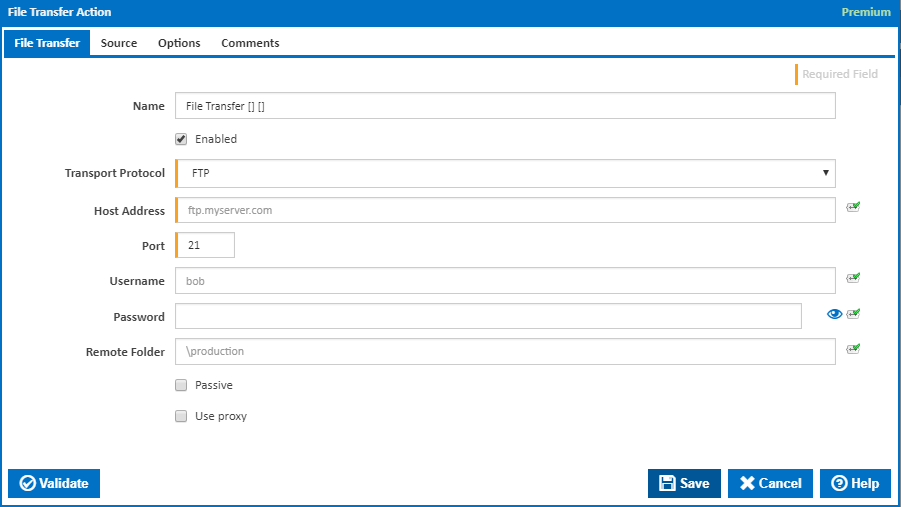
The File Transfer action is a premium action that can be used to transfer packages or application files to a remote server. The action allows transfer via four protocols: FTP, FTPS implicit, FTPS explicit and SFTP.

A friendly name for this action (will be displayed in the actions workflow area).
Determines if this action will be run within the relevant stage.
Selected the transfer protocol to use:
Enter the address of the host to transfer the files to. This can either be a DNS name, URL or IP4 address.
The port that the host is listening on for the selected protocol. Standard ports for each protocol are:
Some servers do use non-standard ports for a variety of reasons, please check with your provider.
The name of the user for logging into the host machine. This can be blank as some file transfer services do not require a username or password to be provided. If a username is required ,you will receive an error from the action stating that a login is required by the host.
The matching password for the supplied username. This can be blank as some file transfer services do not require a username or password to be provided. If a password is required, you will receive an error from the action stating that a login is required by the host.
Note that if the password contains a $ or % they will need to be escaped, e.g. $$ and %%, as these are identifiers for objects and variables in Continua CI.
The folder on the remote machine to upload the files to. Note that this is relative to the base directory for the user on the host. Note that the source folder structure will be preserved when transferring files to the host.
Tick to enable the passive file transfer protocol.
Tick to make the 'Proxy' tab visible.

Enter the folder containing all the files to be uploaded to the host folder. This is typically a workspace location such as "$Workspace$\Output\".
Enter a list of files or file patterns to match the file to be uploaded. Each file/pattern must be entered on a new line. Patterns can contain wildcards as described on the Ant Pattern Usage page.
You can exclude files by prefixing the file name or pattern with a dash. e.g -*.ignore. Exclude patterns always take precedence over include patterns.
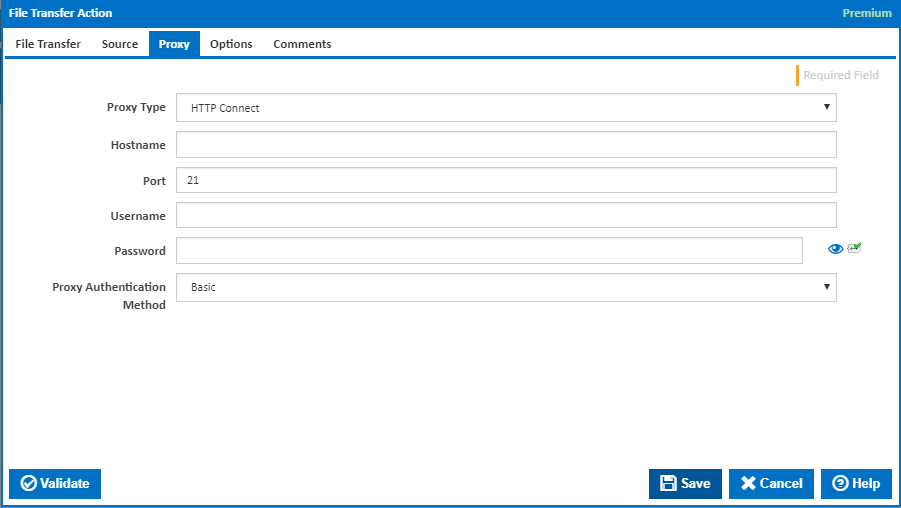
The proxy types handled by the File Transfer action are:
The type of proxy connection will be determined by the proxy server in use. Please talk to your network administrator as to which proxy server your company uses.
Enter the name or address of the host to proxy the file transfer connection through. This can either be a DNS name, URL or IP4 address.
Enter the port to use to connect to the proxy. This will depend on the configuration of the proxy server in question. Talk to your network administrator or proxy provider as to what settings are required for your particular file transfer.
Enter the username required to access the proxy. Some proxies require authentication before you can tunnel your connection through them. If the username is left blank, then no username or password is used for connecting to the proxy.
Enter the password required to access the proxy. This password should match the username provided for the proxy. The password is encrypted on the system, and once entered will not be readable when editing the action.
The method of authentication required by the proxy server. The following proxy authentication settings are available:
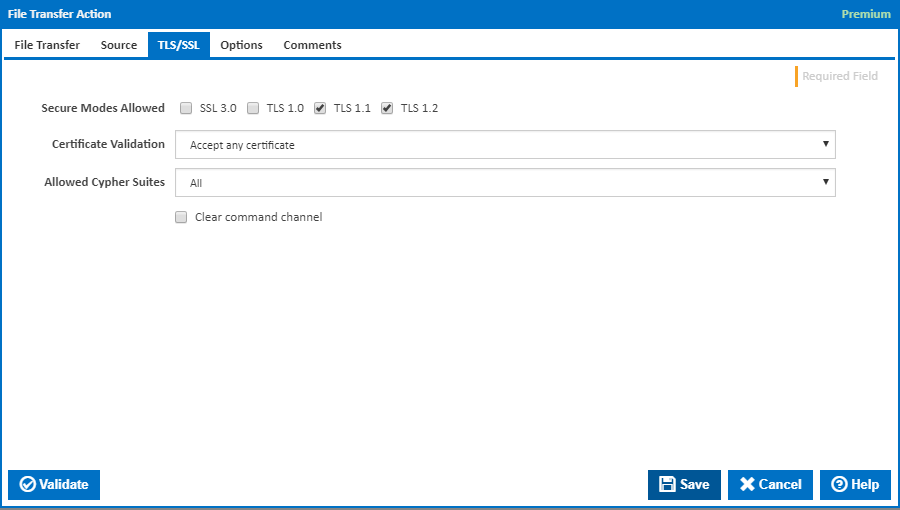
Choose one or more of the following TLS protocols to be accepted when connecting to the host:
Note that these options are only available when a TLS based file transfer protocol is selected, namely the FTPS protocols. Please check with your host FTPS provider as to which TLS protocols to use. Depending on the configuration of the host, certain protocols might not be allowed, or would provide better security for the connection. The action will attempt to select the highest security protocol as a default and log which one was used.
The file transfer action allows the following certificate verification methods.
This box is shown when "Locally stored thumbprint" is selected for the Certification Validation. Enter the thumbprint of the server certificate to accept.
Select the type of cipher suites allow when connecting. The options available are:
Tick this to clear the command channel on the secure connection after login. Some servers require this to function correctly. If your experiencing any login errors where the server is reporting unexpected commands, please turn this option on.
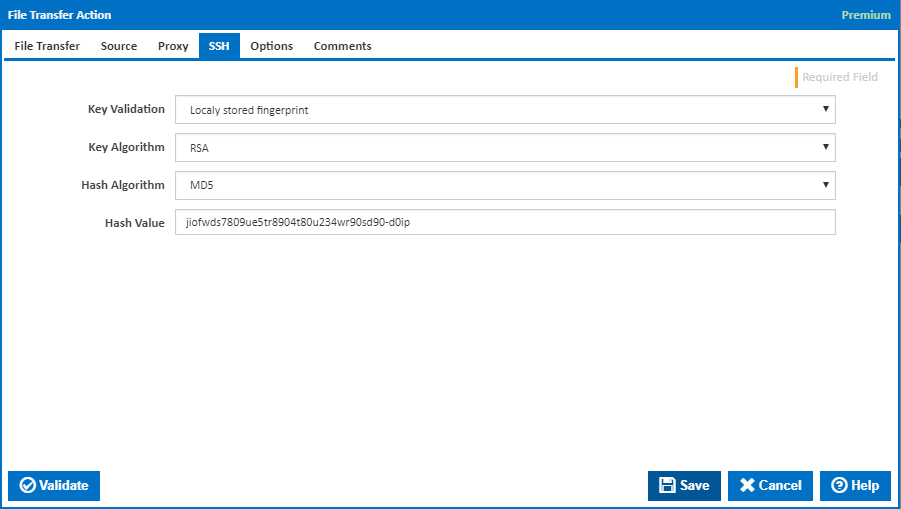
The file transfer action provides the following ways to validate the SSH key of the host:
This option specifies the algorithm that should be used to read the key. This will be known by the administrator of the host.
This option specifies the hash algorithm used to generated a hash of the SSH key. If the algorithm used does not generate the hash listed below, the key will be rejected.
The hash of the SSH hosts key. This should be generated using the hash algorithm listed above.
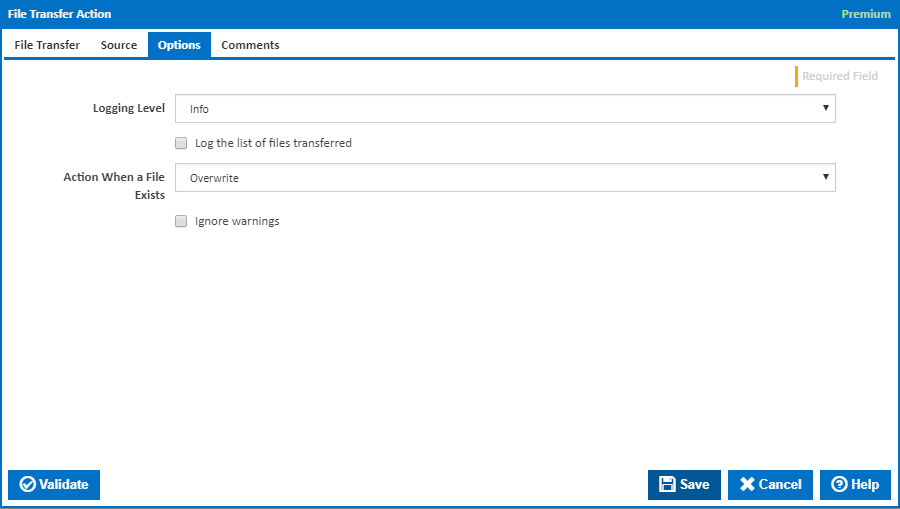
The amount of information detail to display in the build log.
Write the file name of each file transferred to the Build Log.
Select the action to perform when a file already exists:
If this is ticked, any warnings logged will not mark the action with a warning status.